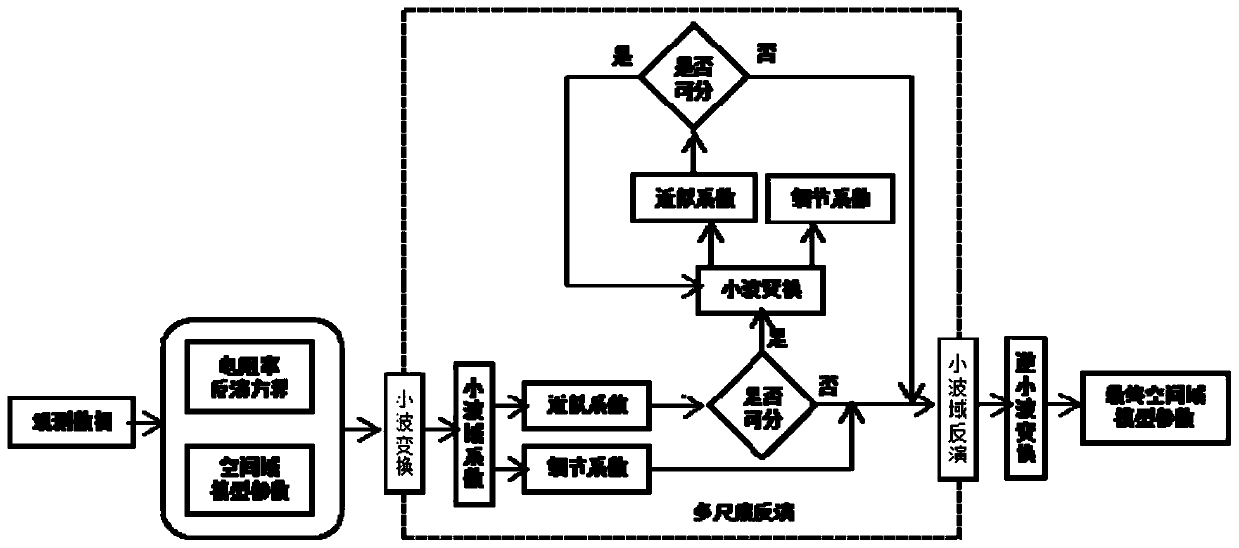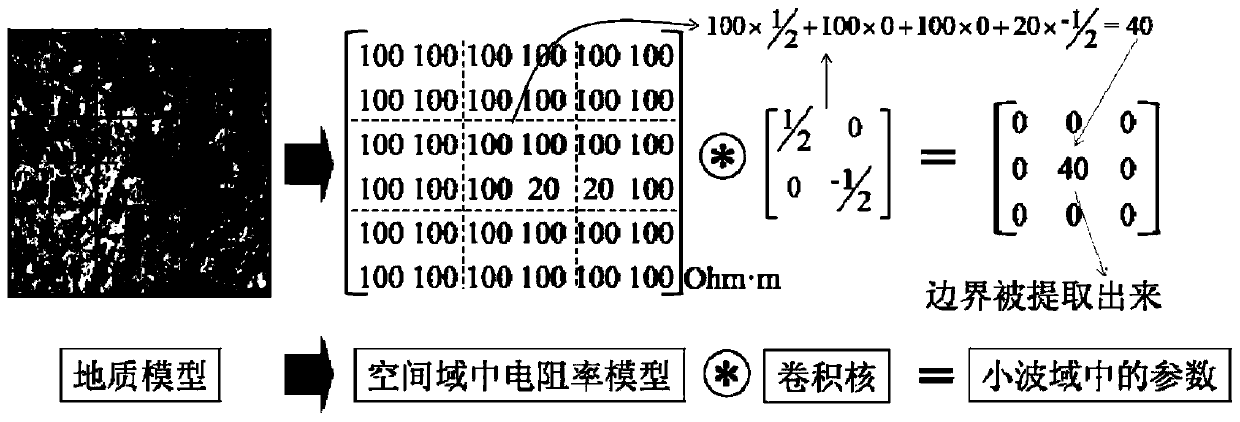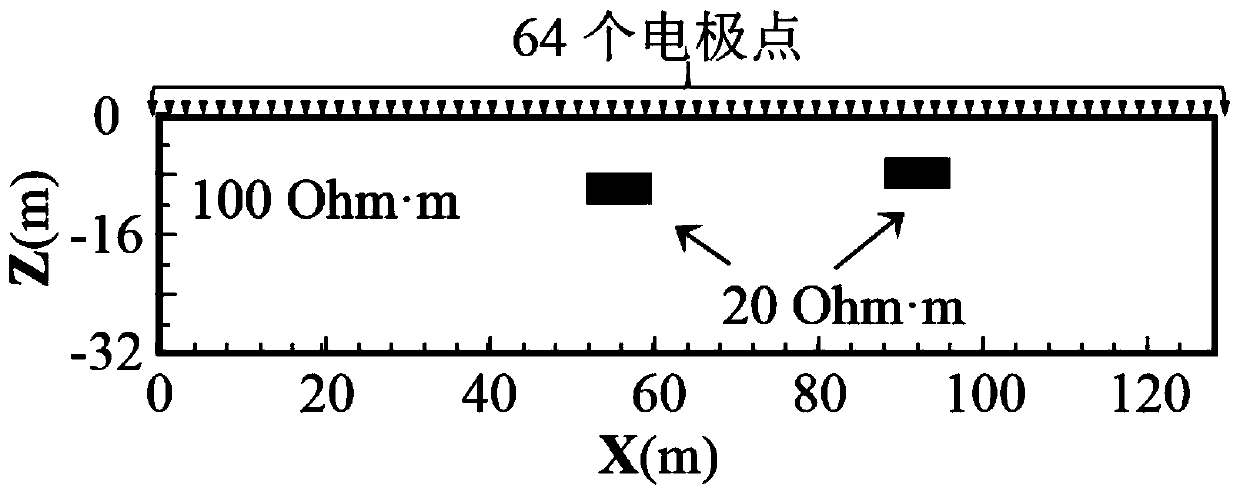Multi-scale resistivity inversion method and system based on wavelet transform
A wavelet transform and resistivity technology, used in electrical digital data processing, complex mathematical operations, instruments, etc., can solve problems such as potential or apparent resistivity data that do not contain frequency information, and it is difficult to determine the exact location of geological interfaces.
- Summary
- Abstract
- Description
- Claims
- Application Information
AI Technical Summary
Problems solved by technology
Method used
Image
Examples
Embodiment 1
[0040] Such as figure 1 As shown, this embodiment provides a multi-scale resistivity inversion method based on wavelet transform, which includes:
[0041] Step 1: For the geological exploration of the selected area, obtain the spatial domain resistivity model parameter m at the initial moment of iteration (1) ;
[0042] In the specific implementation, the spatial domain resistivity model parameter m of the first iteration (1) is the initial spatial domain resistivity model, any model can be taken, and the average value of all apparent resistivity data is usually taken as the resistivity value of the uniform initial model. Forward modeling has clear control equations, and finite element, finite difference and other means can be used to obtain more accurate forward modeling results, and G(·) is used to represent the forward modeling process. The forward modeling result of the space domain resistivity model at the initial moment of iteration is G(m (1) ).
[0043] There are ...
Embodiment 2
[0080] This embodiment provides a multi-scale resistivity inversion system based on wavelet transform, which includes:
[0081] (1) A device for collecting apparent resistivity data, including electrodes in a specific arrangement, for collecting apparent resistivity data d between preset positions.
[0082] The data d is collected using a specific electrode arrangement, such as a Wenner device, a Schlumberger device, a dipole-dipole or a combination of several devices, to supply power to two points AB, to measure the potential difference of MN, and then through the formula The apparent resistivities ρ of all arrangements are obtained as data d. Here K is the device coefficient, and there is a general solution formula, and I is the supply current.
[0083] There are various methods for geological exploration of the selected area, and the surface high-density technology is used in this embodiment. The specific process is attached figure 2 shown.
[0084] The geoelectric mo...
Embodiment 3
[0112] This embodiment provides a computer-readable storage medium, on which a computer program is stored. When the program is executed by a processor, the steps in the wavelet transform-based multi-scale resistivity inversion method described in Embodiment 1 are implemented.
[0113] In this embodiment, the solution domain of the spatial domain resistivity model is converted from the spatial domain to the wavelet domain for calculation. Based on the characteristics of different scales in the spatial domain resistivity model in the wavelet domain, by constraining the boundary information at different scales, the hidden bad geology is realized. Fine characterization and imaging of body shapes and boundaries.
PUM
 Login to View More
Login to View More Abstract
Description
Claims
Application Information
 Login to View More
Login to View More - R&D
- Intellectual Property
- Life Sciences
- Materials
- Tech Scout
- Unparalleled Data Quality
- Higher Quality Content
- 60% Fewer Hallucinations
Browse by: Latest US Patents, China's latest patents, Technical Efficacy Thesaurus, Application Domain, Technology Topic, Popular Technical Reports.
© 2025 PatSnap. All rights reserved.Legal|Privacy policy|Modern Slavery Act Transparency Statement|Sitemap|About US| Contact US: help@patsnap.com



